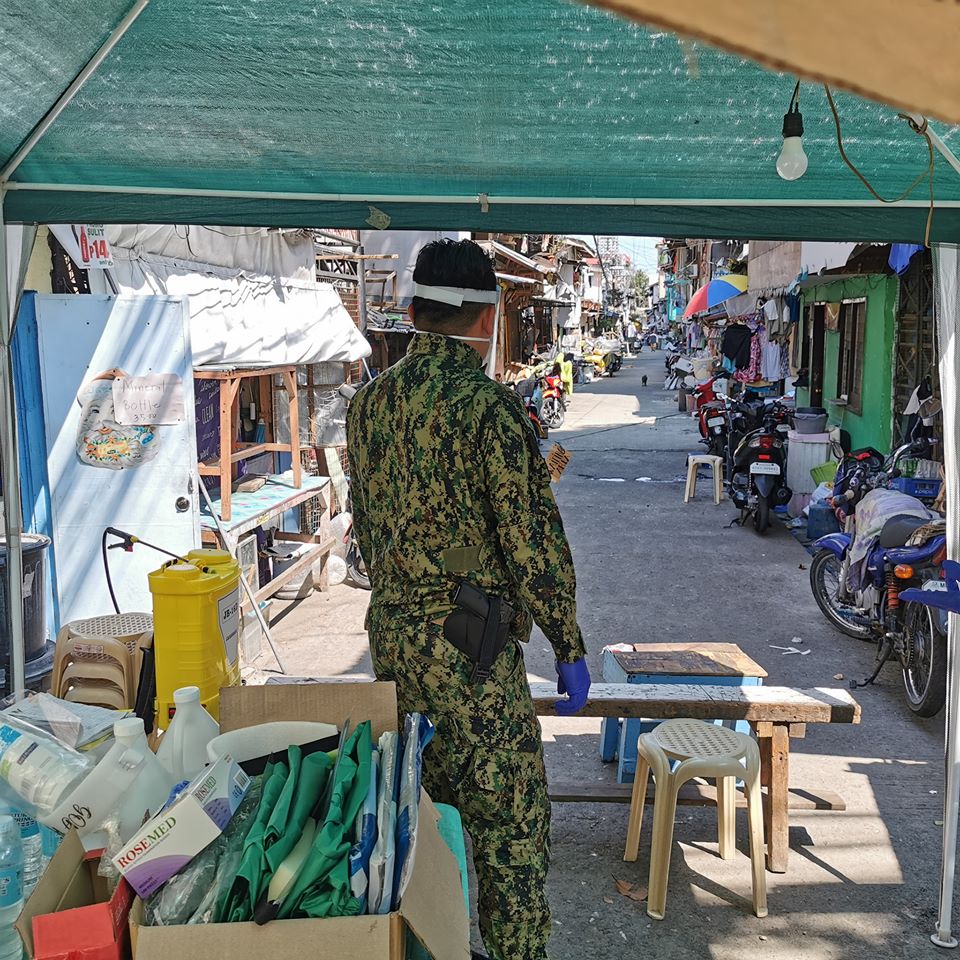LGUs that impose localized lockdowns told to organize quick response teams

Areas with various COVID-19 cases may be placed under localized lockdown by the Local Government Units concerned. | File Photo
MANDAUE CITY, Cebu — While local government units (LGUs) were given the option to organize local lockdowns, they too would have be responsible for organizing their own quick response teams (QRTs) “that should carry out the test-trace-treat strategy against COVID-19 in the lockdown areas,” the Department of Interior and Local Government said.
Secretary Eduardo M. Año said that even if the Inter-Agency Task Force for the Management of Emerging Infectious Diseases (IATF-MEID) has given LGUs the authority to impose localized lockdown, it remained to be their responsibility to implement strategies to contain the spread of the infection as well as implement programs that would alleviate the condition of the individuals who would be affected by the lockdown.
“Imposing a localized lockdown comes with it several responsibilities. LGUs must be ready to enforce stringent health protocols, aggressively conduct contact tracing, testing, and isolation to contain and prevent the spread COVID-19 in the lockdown areas, among others,” Año was quoted as saying in an advisory that was posted on DILG’s Facebook page on Monday afternoon, June 8, 2020.
Each QRT must include a Health Promotion and Prevention Team (for syndromic surveillance); Disinfection Teams; Swabbing Teams; Contact Tracing Teams; Medical Evacuation Teams; Law and Order Teams; Barangay Health Emergency Response Team (BHERTS) and Social Amelioration/ Support Teams. These teams will be stationed at the municipal or city level Emergency Operations Center (EOC).
Año said in the DILG advisory that it would be also a must for LGUs to also have available data on population, the number of barangays, population density per barangay, quarantine facilities, treatment facilities, mapping of cases, syndrome surveillance, and testing kits before actual implementation of the localized lockdown.
Section 2 of Executive Order 112 that was issued by the Office of the President authorizes provincial governors to impose, lift or extend community quarantine in component cities and municipalities, while mayors may exercise the same authority in barangays.
Provincial governors, Año said, could declare localized lockdowns in cities and municipalities in their localities “with 10 or more new clusters of cases; a surge of new sporadic cases within the last 14 days; and incidence of suspected and probable cases.”
City and/or municipal mayors can also order for localized lockdowns “in buildings, business establishments, markets, streets, and blocks if there are an initial number of cases identified and clustering of cases; in subdivisions, puroks, barangays with two or more cases in seven days and incidence of suspected and probable cases; and in a cluster of barangays and districts if there are two or more new clusters of cases and incidence of suspected and probable cases.”
“Such decisions should have the concurrence of the regional IATF. Meaning, the mayor must consult with the RIATF before imposing a localized lockdown,” Año said.
He said that the country can no longer afford to place entire regions under ECQ because “the government has to keep the balance between containing and preventing the spread of COVID-19 and mitigating the social, economic and security impacts of the pandemic crisis.”
“Our approach now are localized and surgical lockdowns since we have been able to flatten the curve already,” he said./dbs
Disclaimer: The comments uploaded on this site do not necessarily represent or reflect the views of management and owner of Cebudailynews. We reserve the right to exclude comments that we deem to be inconsistent with our editorial standards.
